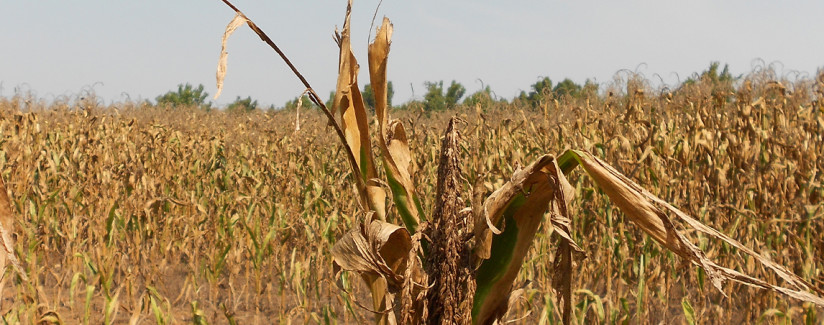
Drought: What Does It Mean For Food?
With more than half the country in the grips of the most severe drought in decades, consumers brace for higher food and fuel prices. We spoke with Dr. Chris Hurt, professor of agriculture economics, Purdue University, about how the drought will impact our food system and how soon it will happen.
Just how extensive is this drought?
Dr. Hurt:
“About 64 percent of the continental United States is experiencing drought which surpasses the 1956 drought. We have to look back to the 1930s to find something that equals this one. I think it’s safe to say that over 100 years, this would be a top-5 drought.”
How has the drought affected prices for crops (commodities) so far?
Dr. Hurt:
“There are increases across the board:
- Corn prices are up about 60 percent
- Oat prices are up about 35-to-40 percent
- Soybeans are trading about 25 percent higher
- Wheat is up about 40 percent
“The wheat crop wasn’t highly impacted by the drought, but it is used, for example, as a substitute for corn in feeding farm animals so the price will go up as corn and soybeans come into shorter supply.”
What will the impact on food prices be and how quickly will consumers see it?
Dr. Hurt:
“Consumers will see higher prices for some foods more quickly than others. Foods that contain corn, soybeans, wheat and oats, for example, will rise in price relatively quickly. Meat price hikes will also occur but it will take a year or two for them to reach the consumer.
“When people hear that the price of corn has risen 60 percent they naturally assume there will be a similar increase in the price of a box of cornflakes. That’s not the case. The corn in a box of cornflakes represents only about 5 percent of its retail value. So, if corn prices go up 60 percent, the price of a box of cornflakes will go up about 3 percent.
“Foods such as bread, oatmeal, cooking oils, margarine and salad dressings will experience similar price increases because of shorter supplies of wheat, oats, and soybeans.
“As for meat prices, corn and soybeans are the primary ingredients farmers feed cows, pigs and chickens. Higher corn and soybean prices make it more expensive for farmers to feed these animals and will ultimately mean higher grocery store prices for ground beef, bacon and chicken breasts. As the cost of feeding the animals, rises the profit realized by farmers decreases which results in fewer animals being raised. As the overall number of animals being raised decreases over time, the price of the products that come from them increases. In the case of this drought, that means we’ll see higher meat prices in 2013 and 2014.”
How will lower corn yields effect ethanol production and what will the impact be on fuel prices?
Dr. Hurt:
“In the six weeks starting in mid-June, the price of ethanol went up about 60-cents per gallon. When we consumers buy gasoline for our cars, about 10 percent of it is ethanol. So, that 60-cent increase in a gallon of ethanol results in about a 6-cent per gallon increase in the price of a gallon of gasoline. On an annualized basis that means we’ll be spending about $8 billion more for gasoline in the United States.”
Image: “Corn in drought, Western Kentucky, August, 2012” by CraneStation is licensed under CC BY 2.0.


























